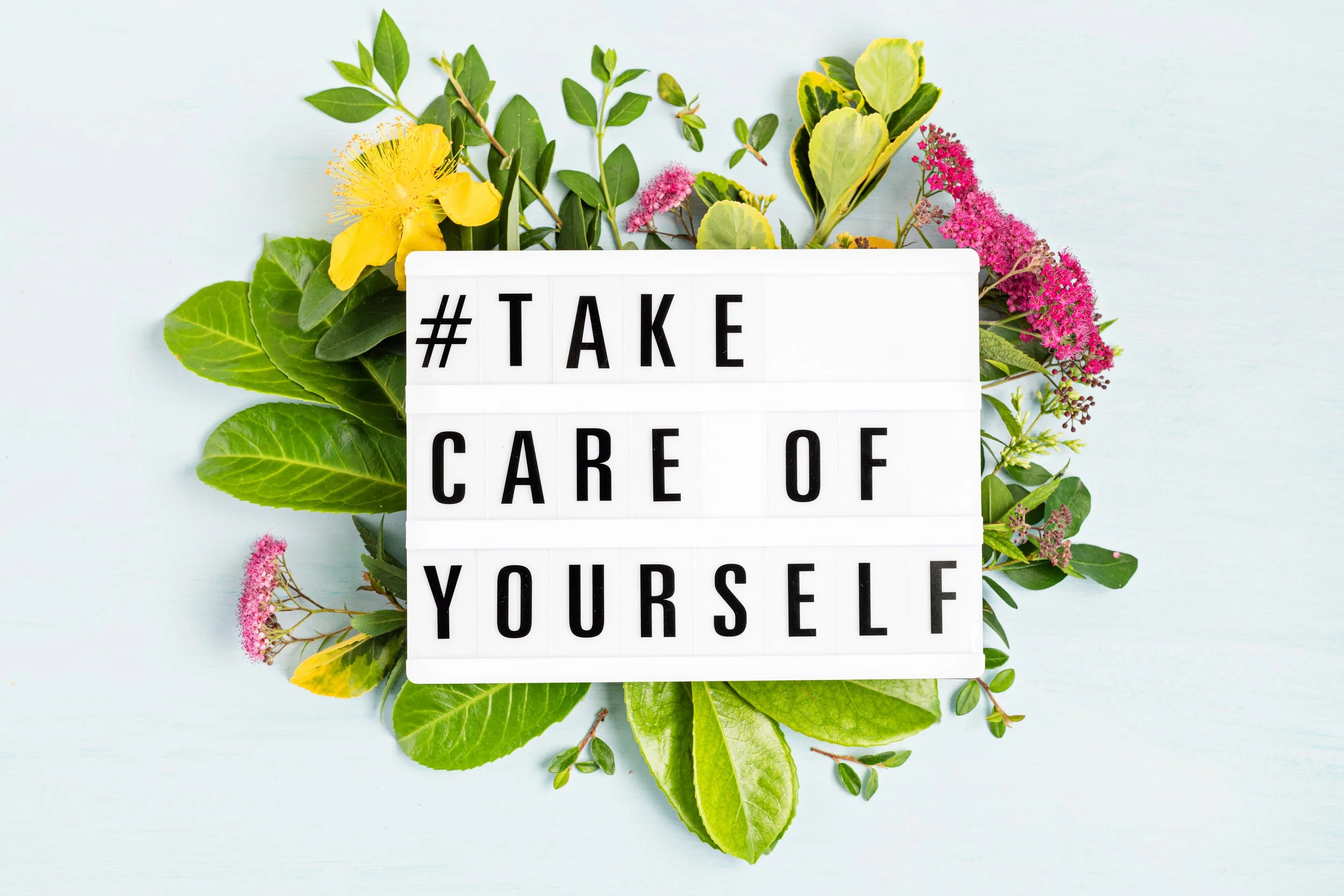
Understanding Ambiguous Loss in 2025: Navigating Grief Amid Global Uncertainty
Ambiguous loss is a profound form of grief that occurs without clear closure or resolution. Coined by Dr. Pauline Boss in the 1970s, this concept describes situations where a person experiences loss without the traditional markers of death or finality. Such losses can be particularly challenging because they often go unrecognized by others, leading to feelings of isolation and confusion.
Ambiguous loss is a profound form of grief that occurs without clear closure or resolution. Coined by Dr. Pauline Boss in the 1970s, this concept describes situations where a person experiences loss without the traditional markers of death or finality. Such losses can be particularly challenging because they often go unrecognized by others, leading to feelings of isolation and confusion.
Types of Ambiguous Loss
Dr. Boss identifies two primary types of ambiguous loss:
Physical Absence with Psychological Presence: This occurs when a person is physically absent but still psychologically present. Examples include a loved one who has gone missing, a spouse who has left without explanation, or a parent who has abandoned the family.
Psychological Absence with Physical Presence: In this case, a person is physically present but psychologically absent. This can manifest in conditions like Alzheimer's disease, brain injuries, or severe mental illnesses, where the individual's cognitive functions are impaired, leading to a loss of the person as they once were.
Recent Insights and Research
Recent studies have expanded our understanding of ambiguous loss, highlighting its impact on various populations and contexts:
Caregivers of Individuals with Dementia: Research indicates that caregivers of individuals with dementia often experience ambiguous loss due to the gradual cognitive decline of their loved ones. This type of loss can lead to prolonged grief and challenges in caregiving.
Impact of Social Movements: Social movements and societal changes can also lead to ambiguous loss. For instance, communities affected by systemic racism may experience a loss of safety and identity, which is difficult to address due to its abstract nature.
Global Crises: Events like natural disasters, political unrest, and pandemics can create situations of ambiguous loss, where individuals lose their sense of normalcy and security without a clear endpoint.
Coping Strategies
Coping with ambiguous loss requires unique approaches, as traditional grieving processes may not apply. Here are some strategies:
Acknowledge the Loss: Recognizing and naming the ambiguous loss can validate the feelings of grief and help individuals begin the healing process.
Seek Support: Connecting with others who understand the experience, such as support groups or therapists, can provide comfort and reduce feelings of isolation.
Practice Self-Care: Engaging in activities that promote well-being, such as exercise, mindfulness, and hobbies, can help individuals manage stress and maintain resilience.
Create Meaning: Finding new ways to create meaning in life, such as through art, community involvement, or personal growth, can help individuals navigate the uncertainty of ambiguous loss.
When to Seek Professional Help
If you find that the feelings associated with ambiguous loss are overwhelming or persistent, it may be beneficial to seek professional help. Therapists trained in grief and loss can provide support and strategies tailored to your specific situation.
At Summit Family Therapy, we understand the complexities of ambiguous loss and are here to support you through your journey. If you're struggling with unresolved grief, consider reaching out to our team for guidance and assistance.
Sources
Boss, P. (1999). Ambiguous Loss: Learning to Live with Unresolved Grief. Harvard University Press.
Kucukkaragoz, H., & Meylani, R. (2024). Ambiguous losses and their traumatic effects: A qualitative synthesis of the research literature. Batı Anadolu Eğitim Bilimleri Dergisi, 15(2), 721-755.
Ahmed, A., & Forrester, A. (2025). Mental health challenges of enforced disappearances: A call for research and action. International Journal of Social Psychiatry.
Danon, A., Dekel, R., & Horesh, D. (2025). Between mourning and hope: A mixed-methods study of ambiguous loss and posttraumatic stress symptoms among partners of Israel Defense Force veterans. Psychological Trauma: Theory, Research, Practice, and Policy, 17(4), 795-804.
Testoni, I., et al. (2023). Ambiguous loss and disenfranchised grief in formal care settings: A study among dementia caregivers. Journal of Aging Studies, 61, 100986.
Kor, K. (2024). Responding to children's ambiguous loss in out-of-home care: A qualitative study. Child & Family Social Work, 29(1), 72-80.
Mac Conaill, S. (2025). Long-term experiences of intrapersonal loss, grief, and change in people with acquired brain injury: A phenomenological study. Disability and Rehabilitation, 47(5), 1012-1020.
Zasiekina, L., Abraham, A., & Zasiekin, S. (2023). Unambiguous definition of ambiguous loss: Exploring conceptual boundaries of physical and psychological types through content analysis. East European Journal of Psycholinguistics, 10(2), 182-200.
Breen, L. (2025). 'Few people thought grief was a worthy topic': Reflections on two decades of research in hospice and palliative care. The Australian Research Magazine.
Not All Healing Happens in Silence: Retreats vs. Therapy Intensives
When it comes to healing, growth, and recovering from trauma, there are several formats offered by therapists and wellness providers. Two common options are group therapeutic intensives and retreats. Though they can overlap, they also have distinct features, formats, and goals. Understanding the differences can help you decide what might best support your personal journey. Below is a comparison, informed by Summit Family Therapy’s Women’s Trauma Recovery Intensives.
Group Therapeutic Intensive vs. Retreat: What’s the Difference?
When it comes to healing, growth, and recovering from trauma, there are several formats offered by therapists and wellness providers. Two common options are group therapeutic intensives and retreats. Though they can overlap, they also have distinct features, formats, and goals. Understanding the differences can help you decide what might best support your personal journey. Below is a comparison, informed by Summit Family Therapy’s Women’s Trauma Recovery Intensives.
Why a Psychotherapy Group Intensive Offers More Than Just a Retreat
While wellness retreats provide a beautiful pause from daily stress, a psychotherapy group intensive offers something far more powerful: lasting psychological change.
Unlike retreats that often focus on rest, relaxation, or general wellness, a group therapeutic intensive is designed for real transformation. These intensives are led by licensed mental health professionals and grounded in evidence-based treatment. Over the course of just a few days, participants engage in focused, structured therapeutic work that might otherwise take months to achieve in weekly sessions.
You're not just meditating or journaling—you’re actively processing trauma, confronting core emotional wounds, learning proven coping tools, and receiving real-time support from both a therapist and a small, safe group of peers who are also doing the work. It's a focused reset for your nervous system and emotional life—not just a break from your schedule.
Where a retreat may offer temporary relief, a therapeutic intensive can create a breakthrough.
If you’re feeling stuck in therapy, overwhelmed by symptoms, or ready to finally move past long-held emotional pain, a group intensive provides the depth, structure, and professional guidance necessary to create meaningful change—quickly, and with support. It’s healing with purpose, not just rest with intention.
What is a Group Therapeutic Intensive?
A group therapeutic intensive usually refers to a structured, concentrated set of therapy-oriented sessions occurring over a relatively short time span (often one weekend or a few consecutive days). Key characteristics include:
Focused therapy work: Several hours per day are dedicated to therapeutic content—processing trauma, learning coping skills, emotional regulation, bodywork (yoga, breathwork), mindfulness, etc. In our “Connections” workshop, for example, you get 12+ hours of intensive group therapy.
Small cohort size: Participants are few in number, which fosters safety, sharing, vulnerability, and connection. Summit’s intensives typically cap participation (e.g. max 12 people) so that each person can engage meaningfully.
Therapeutic leadership: Led by licensed mental health professionals (e.g. Dr. Courtney Stivers in Summit’s case), often with additional specialists (yoga, bodywork, etc.), so therapy is well-supported with trauma-informed methods.
Goal-oriented: Designed to make substantial progress on specific issues (like trauma, emotional regulation, boundaries, night terrors, etc.) in a condensed timeframe. It can be more efficient than spreading the same work out slowly over many weekly therapy sessions. Summit states that these intensives are helpful when weekly therapy may be difficult to maintain.
Therapeutic exercises and customization: Prior to the intensive, there may be questionnaires or assessments to tailor the experience to the group’s needs. For example, Summit sends out a history questionnaire ahead of their workshop.
What is a Retreat?
The term “retreat” is broader and often implies a holistic, restorative environment that may combine therapy but tends to place more emphasis on rest, retreating from daily life, renewal, and integration. Features often include:
More downtime / healing space: Retreats often provide time away from regular responsibilities. This allows clients to rest, reflect, and digest. While Summit’s intensives include therapeutic work, they also include restful practices (yoga, guided self‑care, mindful body‑work).
Integration with wellness practices: Retreats tend to include more holistic or wellness components—yoga, nature,/body‑mind connection, spiritual or mindfulness rituals, possibly art or movement therapy. The Summit workshop includes yoga, breath work, body‑awareness practices.
Sense of separation from everyday life: Retreats frequently take place in settings that promote separation from work, home routines, and usual stressors. This helps people unplug, refocus, and re‑center. Summit encourages staying in a hotel even for local participants to help create that separation.
Balance between depth and rest: While therapy might be part of retreat, it's not always as intensively scheduled as in an intensive. Retreats often mix heavier therapeutic or educational content with lighter, restorative or reflective periods.
Community and connection: As with intensives, retreats often emphasize connection with others—support, sharing, feeling seen and understood—but may make more space for bonding, communal meals, rest, and sharing in less structured ways. Retreats may have much larger numbers than intensives.
Example: Summit’s Model
Summit Family Therapy’s “Connections” intensive illustrates a model that blends both: it’s called an intensive but happens like a mini‑retreat over a weekend. You get deep therapeutic work (group sessions, trauma‑informed content) plus wellness practices (yoga, body connection) and shared community space. The schedule includes multiple therapy sessions per day, along with meals and opportunities for rest and reflection.
It’s designed for women who want to accelerate healing—especially those who find weekly therapy challenging or insufficient alone. It also gives a chance to reset, disconnect from routine, reconnect with self and others, and return home with new tools and renewed resources.
Conclusion
In short, a group therapeutic intensive tends to lean more toward focused, concentrated therapeutic work in a relatively short timeframe, while a retreat leans more toward holistic renewal, rest, and healing in a more spacious, less‐urgent format. Many programs (like Summit’s) blend elements of both so participants get both depth and restoration. Knowing what you need—whether it’s deep and fast work, or space to unwind and integrate—can help you choose the format that supports your healing best.
Understanding EMDR: A Powerful Tool for Healing Trauma
Trauma can leave a lasting mark on both the mind and body. Memories of painful experiences may replay over and over, emotions can feel overwhelming, and daily life can become a struggle. Fortunately, there are effective, evidence-based therapies designed to help the brain process trauma safely—and EMDR is one of the most powerful tools available.
Trauma can leave a lasting mark on both the mind and body. Memories of painful experiences may replay over and over, emotions can feel overwhelming, and daily life can become a struggle. Fortunately, there are effective, evidence-based therapies designed to help the brain process trauma safely—and EMDR is one of the most powerful tools available.
What is EMDR?
EMDR stands for Eye Movement Desensitization and Reprocessing. It’s a type of therapy that helps the brain process and integrate traumatic memories that have become “stuck.” Unlike traditional talk therapy, EMDR works with the mind-body connection to reframe distressing memories so they no longer have the same emotional intensity.
How Does EMDR Work?
During an EMDR session, a therapist guides a client through recalling a troubling memory while engaging in bilateral stimulation—usually eye movements, taps, or sounds alternating between left and right. This process helps the brain process the memory in a way that reduces its emotional charge.
Over time, EMDR can:
Reduce the intensity of painful memories
Decrease anxiety, fear, or flashbacks
Improve emotional regulation
Increase feelings of safety and empowerment
Who Can Benefit from EMDR?
EMDR is widely recognized as an effective treatment for:
PTSD and C-PTSD
Anxiety and panic disorders
Phobias
Trauma from accidents, abuse, or loss
Emotional challenges that feel “stuck”
While EMDR is especially helpful for trauma, it can also support personal growth, resilience, and overcoming negative beliefs about oneself.
What to Expect in a Session
A typical EMDR session begins with:
Assessment and preparation: You and your therapist identify memories or issues to target and develop strategies for staying safe and grounded.
Processing: Through guided bilateral stimulation, the therapist helps your brain reprocess the memory. Emotions may surface, but the therapist supports you throughout.
Integration: New insights and perspectives emerge, helping the memory lose its grip and allowing you to move forward with less distress.
EMDR is not about reliving trauma; it’s about reprocessing it safely so your brain can integrate the experience without being overwhelmed.
Why EMDR is Effective
Trauma often leaves memories “unprocessed” in the brain. EMDR helps the mind process these memories in a natural, adaptive way—similar to how the brain processes experiences during REM sleep. Many clients report feeling lighter, calmer, and more able to engage in life fully after a series of sessions.
Final Thoughts
If trauma or distressing memories are affecting your daily life, EMDR may offer a path toward relief and healing. It’s a collaborative, evidence-based approach that can empower you to reclaim your life from the grip of past experiences.
At Summit Family Therapy, I use EMDR as part of trauma-informed care, helping clients safely process memories, reduce emotional distress, and build resilience. If you’re ready to explore EMDR for yourself, schedule a session with myself (or one of our other EMDR trained therapists) and take the first step toward healing.
What I Wish I Knew: A Parent’s Guide to Navigating Special Education
When I first stepped into the world of special education as a parent, I thought I was prepared. I’m a licensed therapist and I had already spent years working inside the school system. But nothing truly readied me for what it feels like to sit on the other side of the table; this time, as a mom advocating for her child.
When I first stepped into the world of special education as a parent, I thought I was prepared. I’m a licensed therapist and I had already spent years working inside the school system. But nothing truly readied me for what it feels like to sit on the other side of the table; this time, as a mom advocating for her child.
Like many parents, I quickly discovered that the special education system is complicated, full of acronyms, timelines, and legal language that can make your head spin. I also learned that even when you know the system and language professionally, it feels very different when it’s your own child.
While not a replacement for a comprehensive list or lesson on special education law, this post is my attempt to share the things I wish someone had told me in the beginning, including rights, terms, processes, and encouragement that may make advocating for your child a little less overwhelming. Coming from a place of professional knowledge and personal experience, my hope is that you’ll feel more confident walking into meetings, asking the hard questions, and remembering that you are your child’s best advocate.
Disclaimer: I'm not an attorney, and this post is not intended as legal advice. Special education laws and timelines can vary by state, so always double-check details with your local school district or a qualified legal professional if you need specific guidance.
Parent Rights
One of the most important things I’ve learned as a parent in the special education system is that we have rights, and they matter. These are just a few rights I found helpful to keep in mind for myself, and have often used to reassure my clients who navigate the special education world.
90 days right: When you put in a written request for your child to be evaluated for services, at any time during the year, the school is on the clock. They have 90 days to complete the evaluation and let you know if your child qualifies for services, and set up a plan. That timeline is there to protect your child from unnecessary delays, so don’t be afraid to hold the school accountable. I recommend emailing your request directly to your child's teacher and/or principal so that you have your own record of when the request was made.
Support in meetings: You also don’t have to walk into meetings alone. You have the right to bring someone with you; whether that’s a professional advocate, a lawyer, or even just a trusted friend who can take notes and help you feel supported. Having another voice in the room can make a huge difference. My own experience working with a professional advocate was invaluable.
Right to appeal: If you disagree with what the school decides, you don’t have to just accept it. You have the right to appeal. That might mean asking for mediation, filing a complaint, or requesting a due process hearing. These options exist because your perspective matters.
Right to contribute and/or request records: Most importantly, remember that you are an equal member of your child’s team. The school cannot create or finalize a 504 Plan or IEP without parent/guardian input. You also have the right to see all of your child’s records, so you know exactly what’s being said and done on their behalf. It was easiest for me to request copies of everything at meetings and keep them in a folder on my Google drive for reference.
Common Terms & Processes
One of the biggest challenges I faced early on was simply keeping up with all the acronyms. The special education world has a language of its own, and at first I felt like I needed a dictionary just to follow along in meetings. Here are a few of the most common terms you’ll likely hear:
When your child needs extra support at school, you’ll often hear two terms: a 504 Plan and an IEP. While they sound similar, they serve different purposes.
A 504 Plan is designed to give children with a physical or mental impairment access to the classroom. It provides accommodations (things like extra time on tests, preferential seating, or movement breaks) that help a student learn alongside their peers. It doesn’t change what your child is taught, just how they access the learning.
An IEP, or Individualized Education Plan, goes a step further. It’s meant for children whose disabilities require specialized instruction. An IEP not only lists accommodations but also sets specific learning goals and provides services like speech therapy, occupational therapy, social work, or small-group teaching. It’s a legally binding plan under federal education law that shapes how your child is taught, not just how they access the classroom.
In short: a 504 Plan levels the playing field, while an IEP changes the game plan to meet your child’s unique learning needs.
LRE: You might come across the term LRE, which stands for Least Restrictive Environment. This means schools are required to educate children with disabilities alongside their peers as much as possible, providing supports before moving a child into a more separate setting.
FAPE: Another big one is FAPE, or Free Appropriate Public Education. In simple terms, this is your child’s federal right to an education at no cost to you, designed to meet their unique needs.
FBA & BIP: If your child struggles with behavior, the school may suggest an FBA, or Functional Behavioral Assessment. This is a way to figure out why certain behaviors are happening. From there, the team may create a BIP, or Behavior Intervention Plan, which lays out strategies and supports to help your child succeed.
Related Services: You might also hear about related services—things like speech therapy, occupational therapy, or social work—that can be written into an IEP if they’re necessary for your child to learn.
PWN: And when changes are proposed (or denied) in your child’s plan, the school must give you a Prior Written Notice (PWN), which is a formal document explaining what decisions were made and why.
Final Thoughts
It’s a lot to take in, but the more familiar you become with the language, the more confident you’ll feel in those meetings. You don’t have to be fluent in “SPED-speak” right away. Just knowing the basics can help you keep the focus where it belongs—on your child.
Navigating the special education system is rarely straightforward, but you don’t have to do it alone or feel powerless in the process. By learning our rights as parents and trusting our role as equal members of the team, we can approach each meeting with greater confidence. While school professionals bring expertise to the table, we as parents/guardians can bring something no one else can, and that is deep, personal knowledge of our children. Our inclusion and advocacy on the IEP team for our children is not only our right, but is essential and powerful, and is exactly what our children need to learn and thrive.
Looking for additional support? If you’ve been thinking about starting therapy—or returning to it—this is your reminder that you don’t have to walk through life’s challenges alone. I am here to provide a safe, supportive space where you can process, heal, and discover new ways to move forward with confidence and clarity.
Life Transitions: 8 Tips for Navigating Change with Grace and Resilience
Ambiguous loss is a profound form of grief that occurs without clear closure or resolution. Coined by Dr. Pauline Boss in the 1970s, this concept describes situations where a person experiences loss without the traditional markers of death or finality. Such losses can be particularly challenging because they often go unrecognized by others, leading to feelings of isolation and confusion.
What Is a Life Transition?
Life transitions are moments of change that invite us to pause and reflect on who we are and who we want to become. While transitions can happen at any stage of life, they often feel particularly intense during midlife, retirement, or other pivotal periods. It’s normal to feel uncertain, anxious, or even sad during these times—these emotions are part of what it means to be human.
Examples of Life Transitions:
Getting married
Pregnancy or becoming a parent
Divorce or separation
Leaving home or moving to a new place
Empty nest syndrome
Career change or job loss
Health challenges or serious illness
Significant loss (person, pet, or anything important)
Retirement
Why Do Transitions Feel Overwhelming?
Change can feel like stepping into the unknown. Our minds naturally crave predictability, so when the familiar shifts, we may feel anxious, vulnerable, or even mourn the life we once had. Sometimes this stress can show up as trouble sleeping, changes in appetite, or even feelings of depression or anxiety. When it becomes too much to handle on your own, it may even meet the criteria for an adjustment disorder, which is a normal response to major life changes (O'Donnell et al., 2019).
Finding the Silver Lining
Though change can be challenging, it also carries opportunities for growth. Research shows that successfully navigating transitions can strengthen resilience, boost confidence, and increase emotional awareness (Peng et al., 2025). You may discover new skills, uncover what truly matters to you, or develop a deeper sense of self. Even transitions we didn’t choose can bring unexpected benefits.
Coping with Change: Evidence-Based Strategies
Here are ways to care for yourself and navigate life’s transitions with compassion and clarity:
Acknowledge Your Emotions: Allow yourself to feel whatever arises—fear, sadness, excitement, or relief. Naming your emotions validates them and begins the healing process.
Reach Out for Support: Lean on friends, family, or support groups. Sharing your experience reminds you that you are not alone.
Practice Self-Compassion: Be gentle with yourself. Adjusting to change takes time, and it’s okay to stumble along the way.
Take Care of Your Body: Sleep, nutrition, and movement all influence your emotional well-being. A healthy body supports a resilient mind.
Use Active Coping Strategies: Problem-solving, goal-setting, or positive reframing can help you feel more in control of your new circumstances (Sundqvist et al., 2024).
Reflect on Your Values: Clarifying what matters most to you can guide your decisions and help you move forward with intention.
Build New Routines: Small, consistent habits create stability amidst uncertainty.
Allow Yourself Time: Life transitions are a journey. Celebrate small wins and notice how you grow along the way.
When to Seek Professional Help
If the stress of change feels unmanageable, or if you notice persistent sadness, anxiety, or thoughts of self-harm, reach out for professional support immediately. Therapists can provide a safe space to explore your emotions, develop coping strategies, and navigate life’s transitions with guidance and care (Novaković et al., 2025).
At Summit Family Therapy, we honor the courage it takes to face life’s transitions. You do not have to navigate these changes alone. Together, we can explore your feelings, clarify your goals, and help you move forward with hope and confidence.
Sources
O'Donnell, M. L., et al. (2019). Adjustment Disorder: Current Developments and Future Directions. International Review of Psychiatry.
Novaković, I. Z., et al. (2025). Mental health during and after the COVID-19 pandemic. Psychiatry and Clinical Neurosciences.
Peng, M., et al. (2025). Relationships between emotional intelligence, mental resilience, and adjustment disorder in newly licensed registered nurses. Journal of Advanced Nursing.
Sundqvist, A. J. E., et al. (2024). The influence of educational transitions on loneliness and mental health among emerging adults. Journal of Youth and Adolescence.
Parola, A., et al. (2025). Resources and personal adjustment for career transitions in adolescents. Journal of Vocational Behavior.
PTSD vs. C-PTSD: Understanding the Differences
When people talk about trauma, the term “PTSD” often comes up. But in recent years, another diagnosis has gained recognition: Complex Post-Traumatic Stress Disorder (C-PTSD). While both involve the lasting impact of trauma, they are not the same. Understanding the differences can help individuals find the right kind of support and healing.
When people talk about trauma, the term “PTSD” often comes up. But in recent years, another diagnosis has gained recognition: Complex Post-Traumatic Stress Disorder (C-PTSD). While both involve the lasting impact of trauma, they are not the same. Understanding the differences can help individuals find the right kind of support and healing.
What is PTSD?
Post-Traumatic Stress Disorder (PTSD) typically develops after experiencing or witnessing a single traumatic event—or a few distinct traumatic events. These events often involve life-threatening situations, such as:
Military combat
Natural disasters
Serious accidents
Assault or violent crime
Symptoms of PTSD often include:
Flashbacks or intrusive memories
Nightmares
Hypervigilance or being “on edge”
Avoidance of reminders of the trauma
Emotional numbing or detachment
PTSD is the mind and body’s way of staying on alert after something overwhelming and unsafe has happened.
What is C-PTSD?
Complex PTSD (C-PTSD) develops from ongoing or repeated trauma over time, especially in situations where a person feels trapped and powerless. This might include:
Chronic childhood abuse or neglect
Domestic violence
Long-term captivity, trafficking, or oppression
Repeated emotional, physical, or sexual abuse
In addition to the core PTSD symptoms, people with C-PTSD often experience:
Deep shame or guilt
Difficulty trusting others
A negative self-image (“I’m worthless,” “I’m broken”)
Emotional regulation struggles (intense anger, sadness, or numbness)
Persistent feelings of helplessness or hopelessness
Challenges with relationships and attachment
While PTSD may feel like the nervous system is “stuck in the past,” C-PTSD often feels like trauma has woven itself into a person’s sense of identity and daily life.
Why the Distinction Matters
Recognizing the difference between PTSD and C-PTSD is important for healing. Traditional PTSD treatments may not fully address the relational wounds, shame, and chronic stress patterns seen in C-PTSD. Complex trauma often requires a slower, gentler, and relationship-focused approach to restore safety and self-worth.
Pathways to Healing
The good news is that both PTSD and C-PTSD are treatable. Therapy can help you reconnect with your body, process memories safely, and begin to rewrite the story trauma has left behind. Helpful approaches may include:
EMDR (Eye Movement Desensitization and Reprocessing)
Somatic and body-based therapies
Trauma-informed cognitive or narrative therapy
Supportive group therapy or community connection
Final Thoughts
Whether you identify with PTSD or C-PTSD, you are not alone—and what happened to you does not define your worth. Healing may look different for each person, but with the right support, it is possible to find peace, strength, and connection again.
At Summit Family Therapy, I specialize in working with trauma survivors, helping them gently rebuild safety, self-trust, and resilience. If you’re ready to take the next step in your healing journey, I invite you to schedule a session with me, Dr. Courtney Stivers.
When Life Hits Hard: How Critical Incident Stress Debriefing Can Help
Life is complex enough, but there are moments when it suddenly becomes even more overwhelming. These moments are what we call a crisis. A crisis often feels traumatic, and in an instant, our lives are altered forever. It could be a terrorist attack, a violent crime, a natural disaster, or another event that strikes deeply.
Life is complex enough, but there are moments when it suddenly becomes even more overwhelming. These moments are what we call a crisis. A crisis often feels traumatic, and in an instant, our lives are altered forever. It could be a terrorist attack, a violent crime, a natural disaster, or another event that strikes deeply.
When a crisis happens in a shared space—like a workplace, school, sporting event, or office—it becomes a collective tragedy. For example, when staff at a factory witnessed a coworker injured in a violent industrial accident, the impact rippled through the entire team. Recognizing the need to support their employees, the management reached out to a trained professional to conduct a Critical Incident Stress Debriefing (CISD).
What is a CISD?
As a mental health professional, I facilitate CISDs to help individuals and groups process traumatic events. During a CISD, we discuss what happened, what we are feeling, and how we can begin to heal. The first step is creating a safe, confidential space where participants can openly share their experiences and start to explore the question: “Where do we go from here?”
CISDs are flexible—they can occur immediately after a crisis, a week later, or even years after the event. While a CISD is not psychotherapy, it serves as an opportunity for emotional repair and education, helping participants understand that their reactions are normal. Human beings are not built to handle crises effortlessly, so it’s expected that our emotional and physical responses may feel intense or confusing.
What Happens During a CISD
Sharing Thoughts and Feelings: Participants describe what they experienced and how they are feeling now. This helps normalize their reactions and fosters connection.
Educational Component: We discuss common stress reactions and coping strategies, helping participants understand their responses to trauma.
Questions and Discussion: Participants ask questions, often uncovering insights that strengthen the healing process.
Referrals for Further Support: If needed, participants are connected with mental health professionals for additional care.
A CISD is a starting point for healing, giving people a structured environment to process life when it has thrown its hardest punches. It reminds us that while we cannot always control what happens, we can take meaningful steps toward understanding, connection, and recovery.
Integrating Nutrition and Lifestyle for Mental Health: A 2025 Update
Mental health disorders such as depression, anxiety, bipolar disorder, and ADHD are prevalent, affecting millions globally. Recent research underscores the significant role of nutrition and lifestyle interventions in managing these conditions, offering complementary approaches to traditional pharmaceutical treatments.
Mental health disorders such as depression, anxiety, bipolar disorder, and ADHD are prevalent, affecting millions globally. Recent research underscores the significant role of nutrition and lifestyle interventions in managing these conditions, offering complementary approaches to traditional pharmaceutical treatments.
🌱 Nutritional Psychiatry: A Growing Field
Nutritional psychiatry examines how dietary patterns and nutrients influence mental health. Studies indicate that dietary interventions can alleviate symptoms of depression and anxiety. For instance, a meta-analysis revealed that dietary interventions significantly reduced depressive symptoms compared to control conditions.
Furthermore, a comprehensive review highlighted the potential of specific nutrients, such as omega-3 fatty acids and B vitamins, in managing mood disorders.
🥗 The Mediterranean Diet: A Protective Pattern
The Mediterranean diet, rich in fruits, vegetables, whole grains, healthy fats, and lean proteins, has been associated with improved mental health outcomes. Adherence to this diet correlates with lower levels of depression and anxiety.
Conversely, high consumption of ultra-processed foods has been linked to increased risk of mental health issues, emphasizing the importance of dietary choices in mental well-being.
🍬 Sugar and Addiction: Implications for Mental Health
Excessive sugar intake can impact brain chemistry, potentially leading to addictive behaviors. Research suggests that sugar consumption activates dopamine and opioid pathways in the brain, similar to addictive substances.
Additionally, low dopamine levels associated with sugar withdrawal may contribute to cravings and continued consumption, highlighting the need for mindful dietary habits.
💤 Sleep: A Cornerstone of Mental Health
Quality sleep is crucial for mental health. Studies indicate that sleep disturbances are bidirectionally related to mood disorders, with poor sleep contributing to and resulting from conditions like depression and anxiety.
Implementing good sleep hygiene practices—such as maintaining a consistent sleep schedule, creating a restful environment, and limiting screen time before bed—can improve sleep quality and, by extension, mental health.
🏃♀️ Exercise: Enhancing Mood and Cognitive Function
Regular physical activity has been shown to elevate serotonin levels and regulate stress hormones, contributing to improved mood and cognitive function. Engaging in enjoyable activities, setting achievable goals, and exercising with a partner can enhance adherence and overall mental health benefits.
🧠 Integrating Approaches for Optimal Mental Health
Combining nutritional interventions with lifestyle modifications can accelerate therapeutic outcomes. For example, a ketogenic diet has shown promise in helping stabilizing mood and cognitive function in individuals with bipolar disorder.
Collaborating with healthcare providers trained in nutritional and integrative interventions can help individuals identify essential nutrients, develop personalized dietary strategies, and incorporate lifestyle changes to support mental health.
If you are interested in taking the next step in your mental and physical health, I have training in nutritional and integrative interventions. Give our office a call at 309-713-1485 or email info@summitfamily.net. I look forward to finding solution together!
Sources:
Opie RS, O’Neil A, Itsiopoulos C, et al. The impact of whole-of-diet interventions on depression and anxiety: a systematic review of randomised controlled trials. Public Health Nutr. 2015;18(11):2074-2093. PMC6455094
Jacka FN, O’Neil A, Opie R, et al. A randomised controlled trial of dietary improvement for adults with major depression (the “SMILES” trial). BMC Med. 2017;15:23.
Harvard Health Publishing. Mediterranean diet may help ease depression. 2023.
Hall KD, et al. Ultra-processed diets cause excess calorie intake and weight gain: an inpatient randomized controlled trial of ad libitum food intake. Cell Metab. 2019;30(1):67-77.
Lenoir M, et al. Intense sweetness surpasses cocaine reward. PLoS One. 2007;2(7):e698.
Kessler RC, Bromet EJ. The epidemiology of depression across cultures. Annu Rev Public Health. 2013;34:119-138.
Stanford Medicine. Sleep and mental health: What the science says. 2025.
Verywell Mind. What is sleep hygiene? 2024.
News-Medical.net. UCLA Health launches study on ketogenic diet for bipolar disorder in youth. 2025.
The Guardian. Metabolism and diet linked to bipolar depression, scientists say. 2024.
Dating in 2025: What to Look For in a Partner
Dating in 2025 looks a lot different than it did even five years ago. With shifting social dynamics, evolving cultural norms, and the ever-present influence of technology, finding a meaningful relationship can feel both exciting and overwhelming. Whether you’re swiping on apps, reconnecting in person, or simply exploring what you want in a partner, the most important question remains the same: Who should I date?
Dating in 2025 looks a lot different than it did even five years ago. With shifting social dynamics, evolving cultural norms, and the ever-present influence of technology, finding a meaningful relationship can feel both exciting and overwhelming. Whether you’re swiping on apps, reconnecting in person, or simply exploring what you want in a partner, the most important question remains the same: Who should I date?
As a therapist, I see firsthand how powerful our relationship choices are for our mental and emotional health.
The good news is that “who to date” is less about finding the perfect person and more about finding someone who helps you feel safe, supported, and true to yourself.
Qualities to Look For in 2025
1. Emotional Availability
In 2025, we’re moving past surface-level attraction alone. Someone who can communicate feelings openly, handle conflict with care, and show up consistently is far more valuable than someone who checks every box on paper. Emotional availability builds trust and long-term stability.
2. Shared Values
Relationships thrive when partners align on what matters most—whether that’s family, career, faith, lifestyle, or social issues. Perfect agreement isn’t necessary, but mutual respect for each other’s values creates a strong foundation.
3. Respect for Boundaries
A healthy partner listens when you say “no,” honors your needs, and doesn’t pressure you into situations that feel uncomfortable. In a world where boundaries are often blurred by constant digital connection, respecting personal space and time is more important than ever.
4. Growth Mindset
No one is perfect, and relationships are journeys of growth. Look for someone who is willing to learn, adapt, and grow alongside you rather than resist change or place blame. Couples who embrace growth together often develop deeper connection and resilience.
5. Joy and Compatibility
Amid all the serious talk, let’s not forget: dating should bring joy! Laughter, shared hobbies, and simply enjoying each other’s company are the glue that keeps relationships fun and fulfilling.
Who Not to Date in 2025
Just as important as knowing who to date is recognizing red flags:
Those who dismiss your feelings or invalidate your experiences.
Partners who create cycles of drama or instability.
Individuals unwilling to respect your boundaries, time, or goals.
People who are inconsistent—showing up one day and disappearing the next.
The Bottom Line
In 2025, the best person to date is someone who helps you feel more like yourself, not less. Look for partners who value connection, growth, and respect. Healthy love doesn’t erase your individuality—it enhances it.
At Summit Family Therapy, we believe relationships are one of the most powerful forces in shaping mental health and overall well-being. If you’re navigating dating, partnership, or relationship challenges, therapy can be a safe space to reflect, gain clarity, and build stronger patterns for love and connection.
Ready to explore what healthy love looks like for you? Schedule a session with Dr. Courtney Stivers at Summit Family Therapy and take the next step toward building relationships that truly last.
The Benefits of Connecting Mind and Body for Mental Health
When we think about mental health, we often imagine thoughts, feelings, or brain chemistry. But the truth is, our mental well-being is deeply connected to our physical selves. The body and mind are not separate systems—they are constantly in conversation. When we learn to connect the two, healing becomes more whole, more sustainable, and more empowering.
When we think about mental health, we often imagine thoughts, feelings, or brain chemistry. But the truth is, our mental well-being is deeply connected to our physical selves. The body and mind are not separate systems—they are constantly in conversation. When we learn to connect the two, healing becomes more whole, more sustainable, and more empowering.
Why the Mind-Body Connection Matters
Stress, anxiety, depression, and trauma don’t live only in our heads. They show up in our bodies, too—tight shoulders, upset stomachs, racing heartbeats, fatigue. This is because our nervous system, hormones, and immune system all respond to emotional experiences. Ignoring the body when we’re caring for our mental health is like trying to listen to half of a conversation.
By noticing and supporting the mind-body connection, we can create more balance and resilience.
Key Benefits of Mind-Body Connection
1. Better Stress Regulation
Breathing techniques, gentle movement, and mindfulness practices calm the nervous system, helping the body shift out of “fight or flight.” When the body relaxes, the mind follows.
2. Improved Emotional Awareness
Tuning into the body helps us notice early signs of stress or emotional overwhelm. A racing heart, shallow breath, or muscle tension can become cues to pause, reset, and take care of ourselves before emotions feel unmanageable.
3. Healing from Trauma
Trauma often lingers in the body long after the mind has tried to move on. Practices like yoga, EMDR, grounding exercises, or somatic therapy help release stored tension and create a sense of safety in the body again.
4. Increased Resilience and Energy
When we nurture both body and mind—through movement, sleep, nutrition, and mindful awareness—we support the whole system. This makes it easier to recover from stress, adapt to challenges, and feel more energy for daily life.
5. Greater Self-Compassion
Learning to listen to the body with curiosity (instead of judgment) teaches us to treat ourselves with kindness. That gentleness toward our bodies often translates into more compassion for our thoughts, emotions, and overall self.
Ways to Strengthen the Mind-Body Connection
Practice mindful breathing or meditation.
Try gentle movement like yoga, stretching, or walking.
Use grounding techniques (noticing what you see, hear, feel in the present moment).
Keep a journal of body cues and what emotions they may signal.
Work with a therapist trained in somatic or trauma-informed approaches.
Final Thoughts
Connecting the mind and body is not about perfection—it’s about awareness. By paying attention to the signals our bodies send and responding with care, we can support our mental health in powerful, lasting ways. Healing happens not just in our thoughts, but in every breath, heartbeat, and step forward.
If you’re ready to begin exploring the mind-body connection in your own life, I’d love to walk alongside you. As a trauma-informed therapist, I help individuals find healing, balance, and resilience through both emotional and somatic approaches. Give my practice a call at 309-889-4290.
Finding Safety & Growth with Kaylee Yates, MA, LMFT
Meet Kaylee Yates—a therapist whose empathy meets expertise, offering a healing space where both struggle and joy are honored. As Kaylee warmly puts it, “if you are going to do surgery in therapy, make sure to dip the scalpel in the anesthetic of love.” That grounding philosophy—creating a sanctuary of safety before confronting pain—is woven through everything she does.
Meet Kaylee Yates—a therapist whose empathy meets expertise, offering a healing space where both struggle and joy are honored. As Kaylee warmly puts it, “if you are going to do surgery in therapy, make sure to dip the scalpel in the anesthetic of love.” That grounding philosophy—creating a sanctuary of safety before confronting pain—is woven through everything she does.
A Person-Centered
Foundation
At the core of Kaylee’s work is person-centered therapy: a space where your unique story matters, and healing is guided together, not prescribed. She believes that everyone carries their own journey—she listens, learns, and walks alongside.
Expertise in Depression & Anxiety
Kaylee supports individuals, couples, and families in navigating depression and anxiety, helping clients rediscover clarity and resilience. Whether you're sitting across from her in person (hopefully with a cup of coffee in hand!) or joining via telehealth (where her cats might make surprise appearances), the connection is always warm and steady.
Healing Attachment and Relationship Wounds
While not always named outright, Kaylee’s specialties—couples, premarital, family, and young adults—hint at her deep understanding of attachment dynamics and relationship healing. Whether it's strengthening bonds or unpacking betrayal or insecurity, her relational focus supports restoring trust and connection.
Walking Through Trauma & Betrayal
Kaylee offers a compassionate presence for those grappling with trauma, grief, or betrayal. Though she doesn't emphasize specific trauma modalities, her overall approach—grounded in safety, narrative, and empathy—lends itself powerfully to processing deep wounds and restoring belonging.
Untangling People-Pleasing & Self-Destructive Patterns
Many who enter therapy find themselves trapped in self-sabotaging or people-pleasing habits. Kaylee meets where you are—honoring the pain behind the pattern, inviting curiosity without judgment, and helping you claim boundaries, assert needs, and nurture self-compassion.
Why Kaylee’s Approach Truly Matters
Safety First: A space where vulnerability is held, not judged
Your Story Centered: Therapy tailored to your history, not a one-size-fits-all script
Holistic Support: Whether through grief, trauma, relationships, or stress—a person-centered view always applies
Warm & Accessible: In-person (with coffee!), telehealth (with cat cameos!)—human connection is never compromised
Deep Relational Insight: Skilled at navigating attachment challenges, betrayal, and restoration of trust
In Her Own Words
Kaylee’s commitment shines through when she says:
“Therapy is not always easy… I may not be able to promise that the road to healing is easy, but I can promise to walk through this valley with you.”
That promise—of presence, partnership, and compassion—is at the heart of what makes her approach so profoundly supportive.
Ready to Begin?
If you're seeking healing from anxiety, depression, trauma, attachment wounds, betrayal, or the burdens of pleasing others—Kaylee Yates offers a therapy space where your story is seen, your heart is held, and your growth is guided—with love.
Interested in booking a session or exploring whether she’s the right fit? Reach out via our contact form to learn more about availability, telehealth or in-person options, and how to take the first step forward.
Reflecting on Dr. James Dobson’s Legacy: Parenting, Child Welfare, and Controversy
Dr. James Dobson, a prominent evangelical leader and founder of Focus on the Family, passed away on August 21, 2025, at the age of 89. Throughout his life, Dobson was a significant figure in American family dynamics, offering guidance to millions of parents while also sparking debates on child-rearing practices.
Dr. James Dobson, a prominent evangelical leader and founder of Focus on the Family, passed away on August 21, 2025, at the age of 89. Throughout his life, Dobson was a significant figure in American family dynamics, offering guidance to millions of parents while also sparking debates on child-rearing practices.
As a psychotherapist and someone who was raised in a household influenced by his teachings, I wanted to sit with this news for a few days before sharing my thoughts.
A Voice in Parenting and Child Welfare
Dobson's influence began with his 1970s book Dare to Discipline, which advocated for structured parenting and the use of corporal punishment. He believed in the importance of parental authority and discipline, emphasizing the need for clear boundaries and consequences for children. His approach resonated with many parents seeking guidance during times of societal change.
Over the years, Dobson authored over 70 books and hosted a nationally syndicated radio program, Family Talk, reaching millions of listeners. His messages often centered on traditional family values, marriage, and child-rearing, providing a framework for many navigating the complexities of modern parenting.
Controversies and Criticisms
While Dobson's work garnered widespread support, it also attracted criticism. Many child development experts and psychologists have since challenged the efficacy and safety of corporal punishment, suggesting that such methods can lead to negative emotional and behavioral outcomes for children. I would also argue that Dobson's endorsement of physical discipline may have contributed to a normalization of practices now recognized as harmful and potentially abusive.
My major concern is that Dobson largely did not update or correct his guidance even after research consistently showed negative effects of corporal punishment and harsh discipline. While science evolved and child development experts emphasized evidence-based approaches, Dobson continued to promote methods that we now know are outdated or harmful. This raises difficult questions about the responsibility of influential figures to adapt messaging in light of new evidence, particularly when it affects vulnerable children. Even the most loving parents may unintentionally cause harm if given flawed expert advice, especially when it is connected to their faith.
Furthermore, I know of many individuals who have shared personal accounts of experiencing emotional distress and trauma linked to the parenting techniques Dobson promoted. These testimonies highlight the complex and sometimes painful impact of his teachings on certain families.
The Hidden Wounds of Purity Culture and 'Breaking a Child's Will'
At Summit Family Therapy, we often support adults untangling from deeply ingrained messages—particularly those shaped by purity culture or the ideal of authoritarian obedience. These cultural legacies frequently intersect in ways that harm identity, autonomy, and emotional safety.
Purity Culture’s Impact on Self and Body
Purity culture—common in conservative religious settings—emphasizes sexual abstinence, modesty, and rigid gender expectations. Girls are sometimes taught that their value lies in their "purity," and anyone who steps outside those defined boundaries may feel immediately less worthy or spiritually inadequate. This initiates cycles of shame, guilt, and mistrust in one's own body and feelings.
For those raised in purity culture, shame may become woven into identity—deepening inner conflict, distorting sexual understanding, and making intimate relationships difficult or even frightening.
“Breaking a Child’s Will” in Religious Parenting
Another common thread is the idea—often rooted in certain evangelical teachings—that children must be molded into submissive adults through rigid, sometimes painful discipline. Popular guides like Dare to Discipline and The Strong-Willed Child encouraged physical correction as a means to "correct" behavior, under the belief it would align children with both family and spiritual values.
Decades of research now show that such practices—while perhaps effective in the short term—often lead to long-lasting trauma, issues with self-esteem, emotional dysregulation, and relational patterns marked by fear rather than trust.
Healing the Disconnect
When purity culture and authoritarian discipline converge, many adults grow up feeling disconnected from their emotions, bodies, and fairly often—as though they were never truly permitted to develop their own moral code. This can look like difficulty setting boundaries, resisting people-pleasing, feeling unseen, or even fearing autonomy.
As a trauma-informed therapist, I believe healing begins with a reclamation of self—through connection, compassion, and therapeutic exploration. It looks like rediscovering your body as safe, your voice as valid, and your boundaries as essential. It means learning to hear and honor what your emotions and physical self are communicating so you can move toward agency, healing, and deeper resilience.
Adults Deconstructing Faith and Reprocessing Childhood Experiences
In recent years, many adults have begun to deconstruct their faith and critically reflect on the religious and cultural messages they received as children. For some, this journey has revealed painful connections between strict, authoritarian parenting models and experiences of emotional or physical harm. Dobson’s teachings, particularly around discipline and obedience, are often cited by individuals as shaping environments where fear, shame, or corporal punishment were normalized.
These adults may struggle with feelings of betrayal, confusion, or anger, recognizing that the very structures meant to instill morality and love sometimes caused harm. Therapy and supportive communities can play a crucial role in processing these experiences, reclaiming autonomy, and separating spiritual beliefs from harmful practices, ultimately helping individuals heal from intergenerational and faith-based trauma.
My Own Experiences
I can still remember sitting in seminars at my faith-based college where the message was clear: virginal purity was the most valuable thing a person—especially a woman—could offer. Those who “fell short” of this expectation were described as tainted, dirty, a wilted flower, or used up. Yet, in reality, less than 5% of Americans wait until marriage to have sex.
When I think back on those teachings now, my heart breaks for every survivor of sexual abuse or assault who was in that room. Hearing spiritual leaders declare that they were dirty or ruined only reinforced the shame and self-blame they already carried. I want to scream and weep for every woman who has come into my office carrying this burden of shame.
A Lasting Impact
James Dobson’s impact on parenting and family life cannot be overstated. He offered guidance, community, and a sense of direction to many parents seeking support. At the same time, it’s clear that some of his methods contributed to emotional harm, leaving lasting effects on children who grew up under strict or fear-based discipline.
As a therapist, I see the importance of reflecting on this legacy honestly. Understanding the past allows us to embrace compassionate, evidence-based approaches to parenting and healing, while honoring the experiences of those who were hurt.
If you are navigating feelings related to childhood experiences, faith, or family trauma, therapy can be a safe place to explore and heal. I invite you to schedule a session with me, Dr. Courtney Stivers, to begin untangling these experiences and reclaiming your sense of safety and self-worth.





















